Starting in October 2014, I automated many tweets by scheduling them for the next year. It cost $126. Within 6 months, I’ve increased my Twitter following by 32%, had interactions with many people I’d love to meet in person, and removed myself from the Twitter Treadmill. And now I use Twitter day to day however I like (mainly sharing links and checking notifications once per month).
Monday through Saturday at some point in the day, you’ll see me tweet out an article that I have actually read with a mention of the author. I’ve been doing this for more than 4 years.
It’s part of my ongoing experiment to use social media platforms more sustainably and effectively.
Even though I joined Twitter back in 2009, I never really took to the platform. It seemed too broadcast-oriented with an insular culture where soon people were fighting over Klout scores. It seemed absurd at worst and tedious at best.
I also couldn’t see any huge traffic benefit to investing time when even tweets from my industry’s most influential leaders drive less than 1% click through rates.
However, after much informed reading and prodding from Brett Snyder, I figured out that even though Twitter does not drive traffic per se – it does drive awareness and connections.
It’s sort of like a giant conference. Each session or networking event doesn’t drive a lead or sale, but the people you see, meet, talk about, and talk with all drive success for everyone in the future.
The question still remains – how do you maintain that visibility and make initial connections without draining hours into a platform that you don’t own. In other words, how do you get to meet and spark conversations with people at the conference without sitting through every boring session, standing in every lunch line, and hovering over the coffee table?
For me, that’s where automated tweets of posts that I have read and found useful comes in. Writing custom tweets, searching and tagging author at the end of each article, then posting is productivity death by a thousand cuts. But batch writing and scheduling the tweets save time while keeping the benefits of custom tweets.
If your goal is to build visibility on Twitter, make connections, build a “sharing safety net” to free your Twitter-self up and save time while doing it, then this strategy is for you.
*Note – also, I tried to make this process as optional as possible. I dislike the bot-ification of Twitter as much as anyone. And yes, by adopting this strategy, you are guilty on the same spectrum as the Internet Research Agency. Use it in moderation with your own personal spin. Don’t hook it up to a random RSS feed. Make it yours with a bit of computer help.
Automating & Scheduling Twitter for a Year
Tools Needed
- Spreadsheet Software + Knowledge of basic formulas
- Buffer
- Bulk Buffer
- List of URLs
Let’s dive in.
Step 1 – Gather a list of URLs
You’re going to need a list of URLs that you have read or want to share. I pulled all the links that I shared in the first 100 editions of my newsletter. That source gave me a list of 350+ URLs that I know are high-quality.
Depending on your browsing habits, your bookmarks might be a good place to look. I could do an entire post on digging these up, but in the meantime, you can grab my actual final list of 326 tweets here.
Either way, you’ll need a raw list of URLs to share – the larger, the better.
Step 2 – Get article titles
Article titles are going to be the foundation of your actual tweet, and you can quickly get them via Screaming Frog.
– Go grab a free copy of Screaming Frog or download Scraper for Chrome
– Paste your list of URLs into a .txt file
– Change Screaming Frog to List Mode, upload your file and crawl
– Export your crawl, which will include titles of all your URLs.
Step 3 – Set up your spreadsheet
I use Google Docs, but Microsoft Excel works very well too. Import your CSV export from Screaming Frog.
Clean up the columns so that you have the URL and Title left.
Then, go ahead and add columns for “Author Handle”, “Comment”, “Tweet”, “Total Length” and “Adjusted Length”.
Aside – you can view and copy my actual spreadsheet here – just click to the Example Sheet tab.
Step 4 (optional) – Find the actual author’s handle
I thought that this step would be essential. If you already have an audience, then it’s worth skipping. But it turns out that it really depends on your goal and your audience. If you are building your initial audience, then I think that connecting to authors via mentions is a useful strategy.
It’s the difference between just posting links aimlessly to Twitter and connecting with individuals. When I share a link on Twitter, I used to deliberately mention the author to publicly thank them, solicit feedback, and bring up something in common with them.
That said, it is also often very difficult to track down the Twitter handle of the actual author of a specific post. I don’t want to mention the publication or website – that’s too impersonal. I want to mention the actual author, and that takes some digging.
There are some scraping tools that you can use, but in my experience, there’s no universal footprint across the web for article author’s Twitter handle. It’s easier to just get help.
And this task is very straightforward to outsource. And if you’ve never outsourced a task, then this is a great first-time task.
Go to UpWork or Fiverr and post the project.
I hired 2 people for the project. Norma and Jinnelle in The Philippines found all the author’s Twitter handles in about 2 days. They had some errors, but by comparing their work, I was able to quickly identify any errors and clean up the spreadsheet.
For $26 total cost for both freelancers (and 1 other person who never sent a file in), I had author Twitter handles for 326 URLs.
Place the handles in the Author Handles columns – including the @ sign.
Step 5 – Write a comment for each URL
This step is optional. Especially for articles with short titles, it allows you to build it out a bit. In the Comments column, just write a short comment that fits your voice “insightful piece”, “using this everyday”, etc.
Step 6 – Concatenate tweets in the spreadsheet
Now you can actually create your Tweet. Use the concatenate formula in the Tweet column to combine [Title] + [URL] + “by” + [Author Handle] + [Comment]. Click the image below to enlarge it.
Copy your concatenate formula down, then copy and paste values so that you can edit the cells.
Step 7 – Edit & revise the tweets
Now you need to make sure the tweet comes in under 140 characters. To do that, create a new column that combines [Title] + “by” + [Author Handle] + [Comment] with the concatenate formula. Note that it basically your tweet, minus the URL.
Run the LEN formula against the new column and add 22 to find out the true length of your tweet. Twitter makes all URLs of any length 22 characters. The actual formula for Google Docs will be =SUM(22,LEN(cell#))
Sort the column to see if you have any tweets over 140 characters. If so, edit.
Now, you need to actually read through all your tweets to make sure they work and do a general check over.
Step 8 – Randomize the tweets (optional)
Now, you need a way to randomize your tweets so that you don’t post the same type tweet 10 days in a row. This step is not required, but highly recommended if you want to not be annoying, and make your tweets look more natural. There’s a bonus feature in Google Docs that allows you to do this quickly.
*This step is optional for Google Sheets because Buffer now has a Shuffle function.
In a new column, run the RAND function to generate a random number. Copy and save the values so that each tweet is assigned a random number. Then filter all your columns with that random number column.
Your tweets are now randomized!
If you haven’t already, do a general clean up of your spreadsheet, save a backup, and create a spreadsheet with only your tweets in Column A.
Export as a CSV file.
Step 9 – Purchase a Buffer Awesome Plan
There’s a ton of tweet scheduling tools out on the Internet. But no tool makes this as easy as Buffer.
Go sign up and get an Awesome Account here. It will allow you to schedule more than 5 tweets at a time (up to 200 at once). If you haven’t already, sync up your account with Twitter (it will also work with LinkedIn, Facebook, and Google+ Pages).
Step 10 – Upload via Bulk Buffer
Buffer doesn’t actually have a CSV bulk upload function, but they do have an API which a separate, free service called Bulk Buffer uses.
Go to BulkBuffer.com, click Start Uploading, sync it with your Buffer account, and head to file upload.
Upload your CSV file and select the settings you want. Then go off and leave it for a bit.
Aside – I donated $5 to BulkBuffer for this simple, but solid timesaving app. I recommend doing the same (or more!).
Step 11 – Final Check in Buffer
Once Bulk Buffer is done, then you can go to your Buffer account and see all your queued up tweets! If you have 365 tweets ready for every day – then congratulations, you have automated Twitter for the next year!
Aside – of course, Buffer allows up to 200, so set a reminder to upload the rest midway through the year.
My Experience after 6 Months
I wish that I could say that automating Twitter shares made my followers and traffic skyrocket.
It hasn’t.
Over ~6 months, my follower count increased +28.6% to 305 from 237. That’s respectable, but along the same trend as before automating. Take note that the extra bump in December came from a giveaway.
Traffic from Twitter to my posts has also been around the same.
However, it has been a worthwhile success in 4 ways:
1. My interactions with actual people on Twitter has skyrocketed. I get a favorite on nearly every tweet I send out. I don’t get click-throughs, but I do get more engagement than I used to – most from people that I mention.
2. I get to share content that I do appreciate in a fast, effective manner. I easily save hours versus manually clicking and typing a custom tweet. My browsing workflow is really productive (allowing me to curate a newsletter from hundreds of sources every week).
3. I have no cognitive guilt or nagging feeling of social media’s amorphous demand to “share more!” All those demands to “use Twitter more” are gone. I have a baseline of sharing that I’m comfortable with, which allows me to use the platform however I want.
4. I have an actual consistent dataset to analyze and make changes with. Unless I actively tweeted, I never knew if some piece of social media advice was actually true. All the talk of using hashtags, mentioning, best times to share, etc, etc can never be proven if it’s best for your account until you try it out. Batch scheduling & automation allows me to test those assumptions productively and efficiently.
5. My daily checking of Twitter has dropped off over time. In fact, I now check Twitter possibly once per month. That hasn’t been great for my presence on Twitter (sorry to all the readers tweeting at me – I’ll respond soon!)…BUT – it has allowed me to dedicate much more focused time to creating and updating content like this. And based on emails, Analytics, and tweets – more original content is the best thing you can do for your Twitter following.
I haven’t actively executed this on Facebook or LinkedIn consistently, but the steps and tools are the same, and could certainly be worthwhile if that’s where even part of your audience is. For me, that will be the next step with automating/scheduling now that I know how well it can work.
My Experience after 4 Years
Looking at my Twitter Analytics shows that my Twitter Impressions are up to 37.4k in a 3 month period vs 19.1k in the same 3 month period 4 years ago.
That’s almost double the impressions over the course of 4 years.
Could I have done more by actually engaging on Twitter? Sure, maybe.
So is the experiment a true success? Well – it’s impossible to do a true A/B test here. But for me – it’s been an incredible success. I wanted a place to regularly share good marketing material with my audience that didn’t clog up my website blog feed.
And I wanted to do it on my terms without getting sucked into the social media vortex. So for me – semi-automating Twitter via bulk upload and scheduling has worked.
I don’t think it’ll work for everyone. And I know that it won’t work for every network. Pinterest was a total failure. LinkedIn is its own thing. And Facebook…well, I’m just not a fan of Facebook at all.
Twitter has worked for Tailored Audiences, and I think I’ll be doing this strategy for the next few years, though I’ll try to do more check-ins to engage with my actual followers.
Next Steps
Be sure to actually use Twitter, and know what you want to achieve. Sharing content for the sake of sharing content is not an effective approach.
The whole point is not to disengage, but to allow you to actually engage more with the people you appreciate by batching the actual Tweeting process. Automate the sharing so that you can focus on interactions.
Go find a good source of (preferably timeless) links that you want to share, organize them, find the author’s handle, and automate the shares!
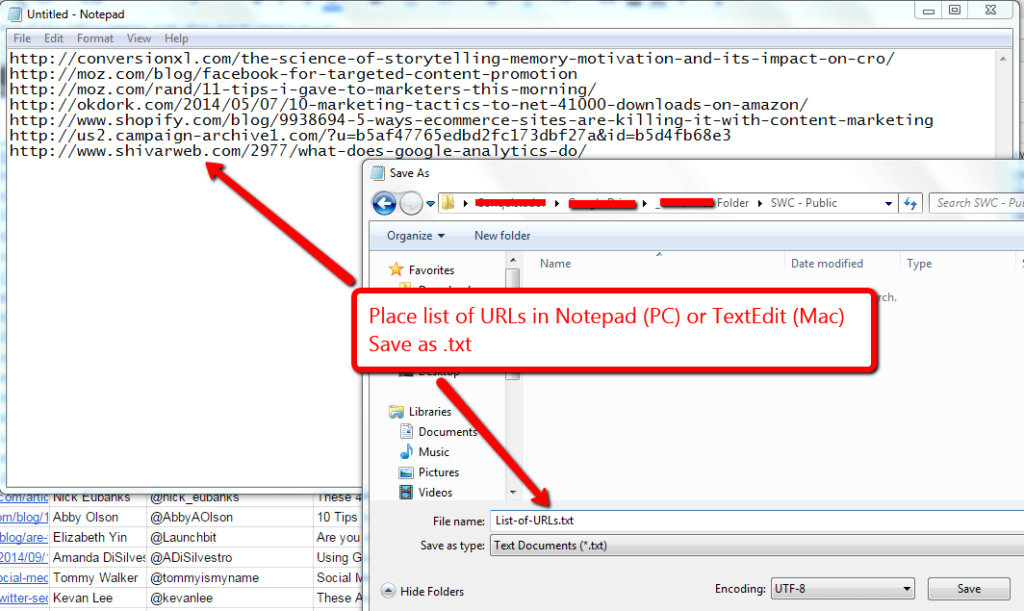

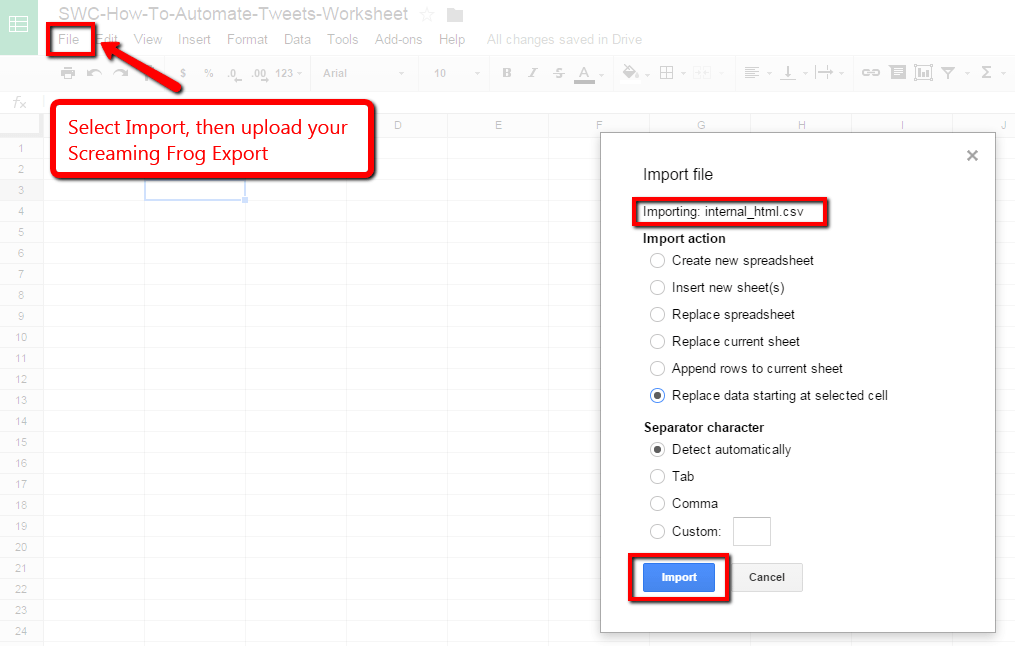


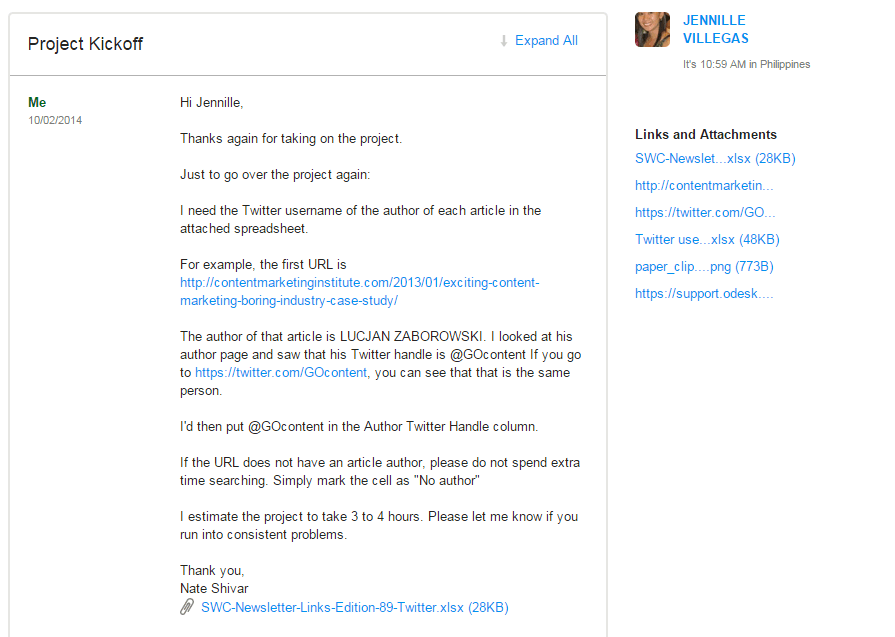
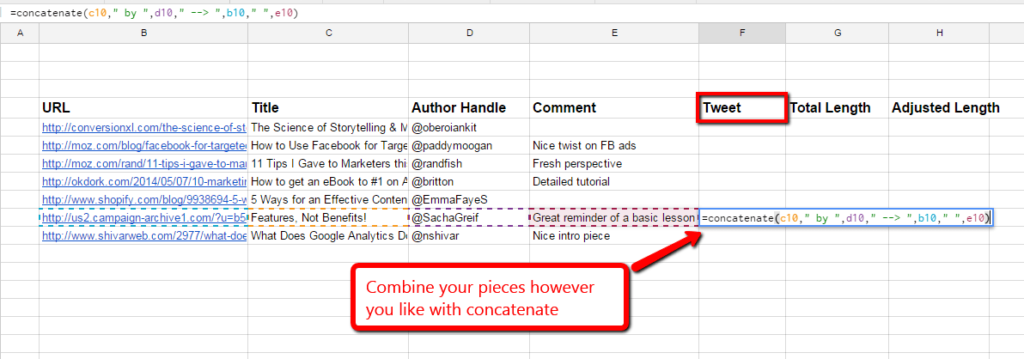

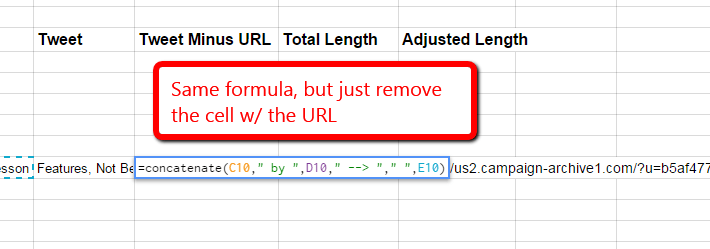

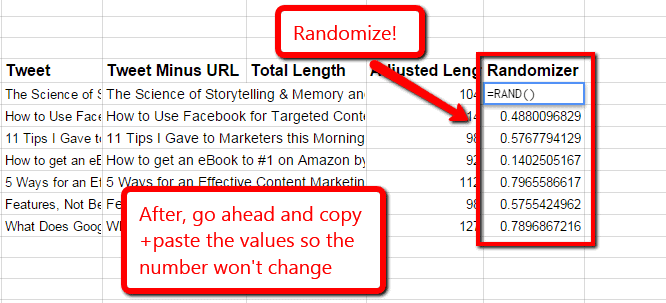
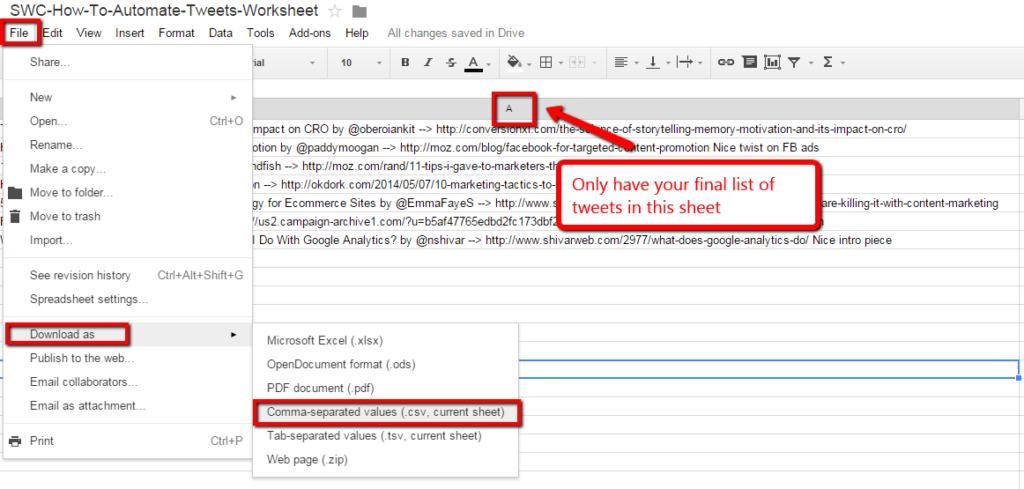
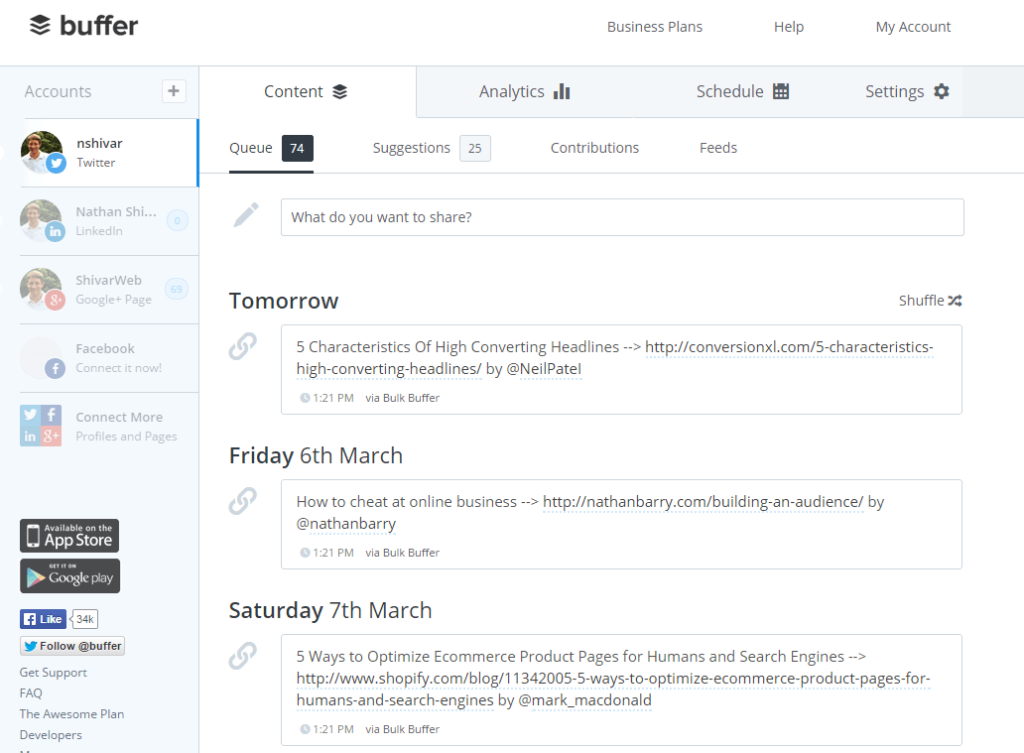

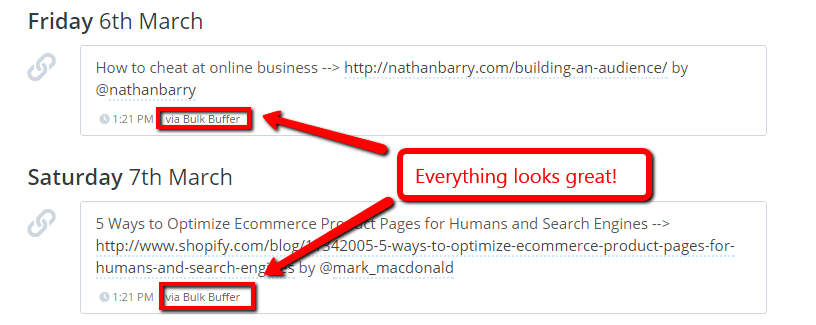
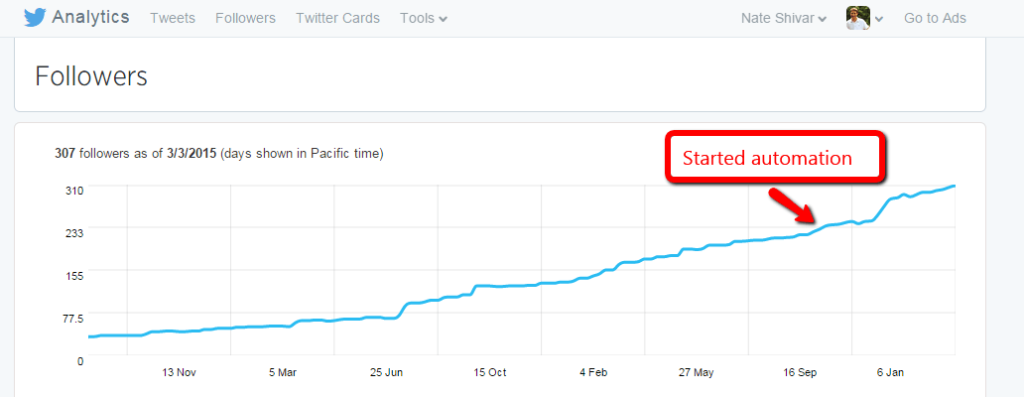

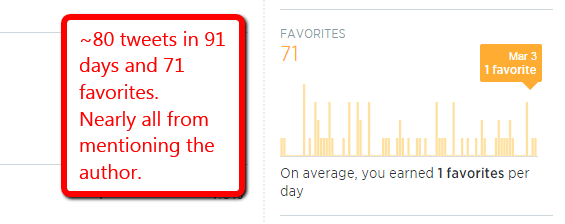




Awesome! Have been looking forward to reading your breakdown of this since you mentioned it to me.
How did you land on 9:21am as your Tweet time? I know there are some tools out there (like Tweriod) that will analyze your Twitter followers and tell you when they’re most active, but curious if there’s a specific approach or tool you recommend.
As the creator of Bulk Buffer, I just wanted to say it’s great to see so many people find it so useful as a part of their toolset. Thank you for the kind words.
Larry, great article! I appreciated the walk-through with the spreadsheet formulas, Screaming Frog and Bulk Buffer (new to me) and liked your conclusion that although it didn’t help you get more leads or click throughs, it helped you connect with people.
I think Twitter has a very specific purpose and scheduling Tweets is undeniably part of it, so seeing your combined approach explained here is a breath of fresh air. I will definitely be bookmarking this article and of course scheduling it in Buffer with your Twitter handle. 😉
I was a bit skeptical when I started reading the article as a big part of Twitter is focused on trends and new articles.
After reading, I have to say that’s really interesting. I love how automating the tweeting process allowed you to focus more on engagement in the end. Great food for thoughts :).
I was just wondering, I see you didn’t use hashtags in the tweets we can see on the screenshots, did you schedule any tweets with industry # just to test if it improve engagement and visibility? Would be interesting to study 🙂
Hi Larry, Thanks for showing your case study, and it is really impressive. Your subject mentioned that you’ve automated the tweets for a year, but here you have shown the results for 6 months ? , Great to notified the characters length of Twitter ( 140 ) , but instead you can use some tool or Google shorten URL to solve the URL length ? that helps in adding some more characters in your tweet. May I know that Analytic s tool that you’re using for your Twitter Account ? Please let me know. Sorry I wouldn’t wish to ask… Read more »
I’ve always encouraged adding in the Twitter handles of the author as an essential element for engagement and this is awesome to see some validation of that approach using this case study.
One follow-up question: One of the biggest fears behind automating anything is that you’ll publish something at the “wrong time” (unexpected disaster, for example). It seems like your article selection helps mitigate the risk of this at all but did you have any instances where the automated posts fired at an inappropriate time? What did you do/would you do to address this if so?